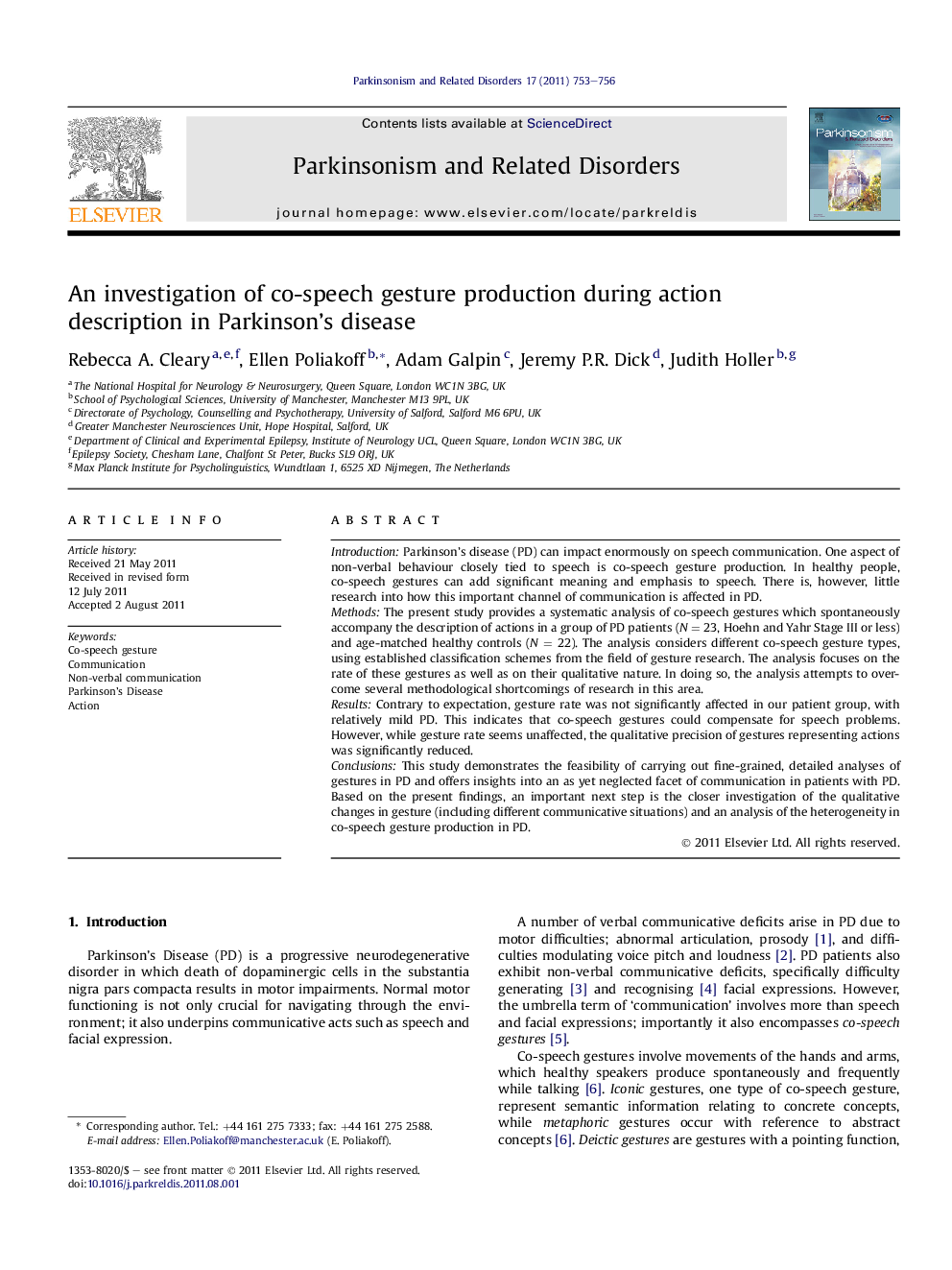| Article ID | Journal | Published Year | Pages | File Type |
|---|---|---|---|---|
| 1920726 | Parkinsonism & Related Disorders | 2011 | 4 Pages |
IntroductionParkinson’s disease (PD) can impact enormously on speech communication. One aspect of non-verbal behaviour closely tied to speech is co-speech gesture production. In healthy people, co-speech gestures can add significant meaning and emphasis to speech. There is, however, little research into how this important channel of communication is affected in PD.MethodsThe present study provides a systematic analysis of co-speech gestures which spontaneously accompany the description of actions in a group of PD patients (N = 23, Hoehn and Yahr Stage III or less) and age-matched healthy controls (N = 22). The analysis considers different co-speech gesture types, using established classification schemes from the field of gesture research. The analysis focuses on the rate of these gestures as well as on their qualitative nature. In doing so, the analysis attempts to overcome several methodological shortcomings of research in this area.ResultsContrary to expectation, gesture rate was not significantly affected in our patient group, with relatively mild PD. This indicates that co-speech gestures could compensate for speech problems. However, while gesture rate seems unaffected, the qualitative precision of gestures representing actions was significantly reduced.ConclusionsThis study demonstrates the feasibility of carrying out fine-grained, detailed analyses of gestures in PD and offers insights into an as yet neglected facet of communication in patients with PD. Based on the present findings, an important next step is the closer investigation of the qualitative changes in gesture (including different communicative situations) and an analysis of the heterogeneity in co-speech gesture production in PD.
